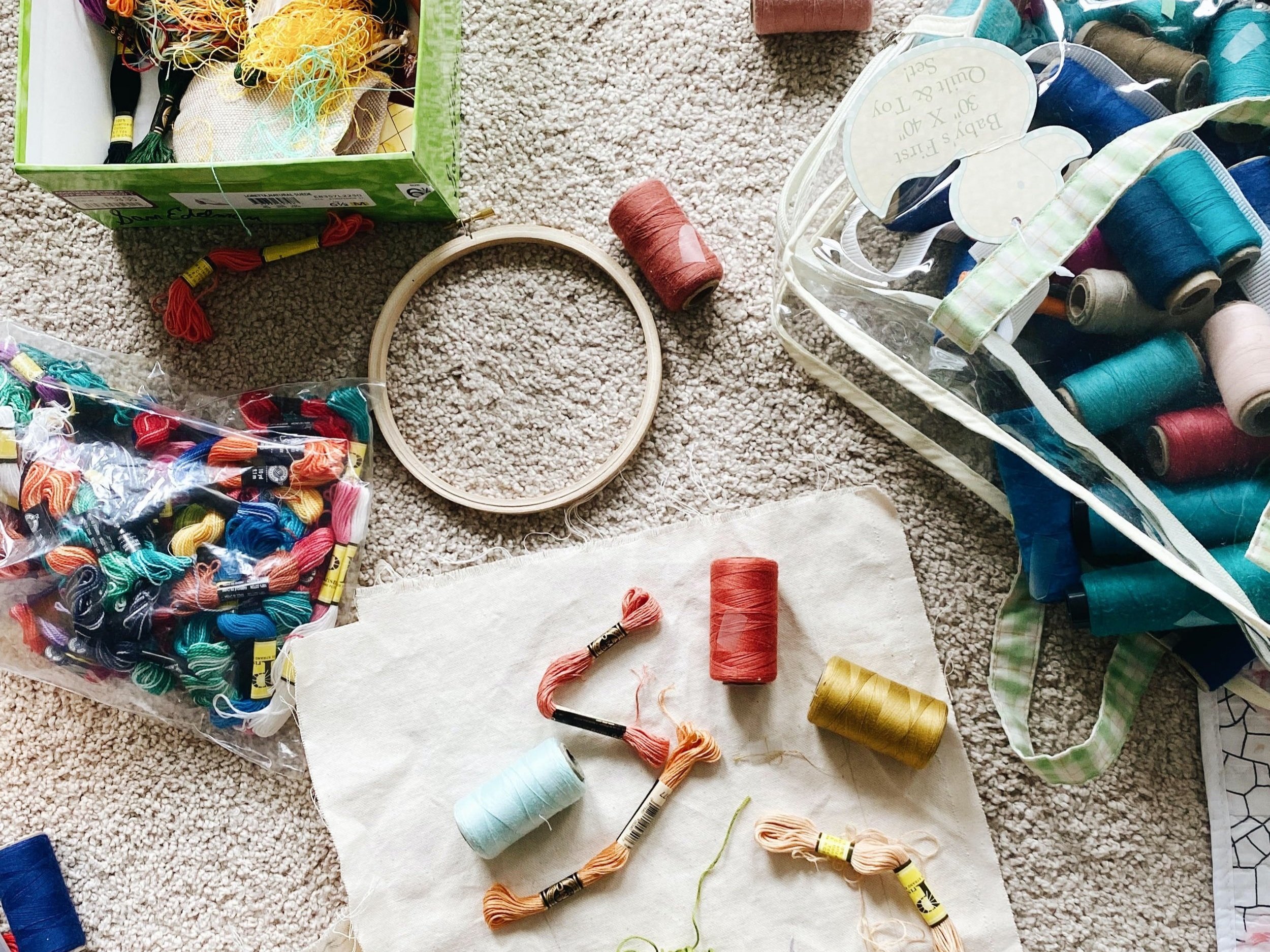How to Upcycle Clothing
Whether you are a seasoned designer, a thrifty fashion enthusiast, or someone looking to make a positive impact on the planet, upcycling clothing offers a world of possibilities.
It empowers us to reimagine the potential of our wardrobes, inspiring us to embrace creativity, sustainability, and a more conscious approach to fashion.
Photo by Utopia By Cho on Unsplash
Our ‘how to’ guide to upcycling helps you dive into the world of upcycling and unlock the hidden treasures in your closet, one stitch at a time.
1. Assess your wardrobe: Start by going through your wardrobe and identifying clothing items that you no longer wear or that are damaged. Look for garments made from materials that can be easily repurposed, such as cotton, denim, or wool.
Photo by Olena Sergienko on Unsplash
2. Gather supplies: Before you begin upcycling, gather the necessary supplies. These may include sewing tools like scissors, needles, thread, and a sewing machine. Additionally, consider collecting buttons, ribbons, lace, and other decorative elements to enhance your upcycled creations.
Photo by Casey Chae on Unsplash
3. Brainstorm ideas: Let your creativity flow and brainstorm different ways to upcycle your clothing. Think about how you can transform a shirt into a trendy crop top or turn jeans into shorts. Research upcycling projects online or look for inspiration on social media platforms like Pinterest or Instagram.
Photo by Kelly Sikkema on Unsplash
4. Repair and mend: If you have garments with minor damage, like small tears or missing buttons, repair them before proceeding with upcycling. Simple fixes can extend the life of the clothing and make them suitable for upcycling projects.
Photo by Toa Heftiba on Unsplash
5. Plan your project: Before cutting or altering any garments, create a plan. Use a sketchbook or paper to sketch out your ideas, note measurements, and visualize how the final product will look. This will help you stay organized and ensure your upcycling project turns out as intended.
Photo by Maria Lupan on Unsplash
6. Get cutting and sewing: Once you have a plan, start cutting and sewing your clothing. Use your scissors to remove unwanted parts or to modify the shape of a garment. Consider adding patches or fabric inserts to give new life to old clothes. Get creative with different stitching techniques to add unique details.
7. Add embellishments: Enhance your upcycled creations by adding decorative elements. Sew on buttons, beads, ribbons, or appliques to transform a plain piece into a statement item. This is your opportunity to add personal touches and make your upcycled clothing truly unique.
Photo by Ratih Mandalawangi on Unsplash
8. Experiment and learn: Upcycling is a chance to experiment and learn new skills. Don't be afraid to try different techniques or combine various fabrics and textures. If something doesn't turn out as expected, view it as a learning experience and adjust your approach for future projects.
Photo by Nathana Rebouças on Unsplash
9. Share and inspire: Once you've successfully upcycled your clothing, share your creations with others. Post pictures on social media, participate in local fashion shows, or organize a clothing swap event to inspire others to upcycle their textiles too. Encourage sustainable fashion practices and promote the idea of reducing waste.
Photo by Anton van der Weijst on Unsplash
Remember, upcycling clothing and textiles not only helps reduce environmental impact but also allows you to express your creativity and create unique pieces that reflect your personal style. Enjoy the process and have fun with your upcycling projects!










